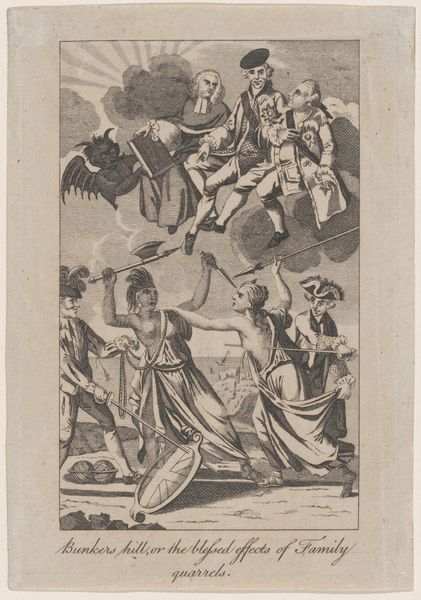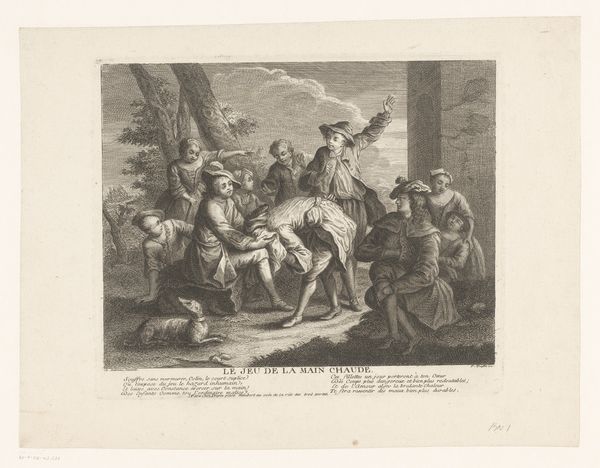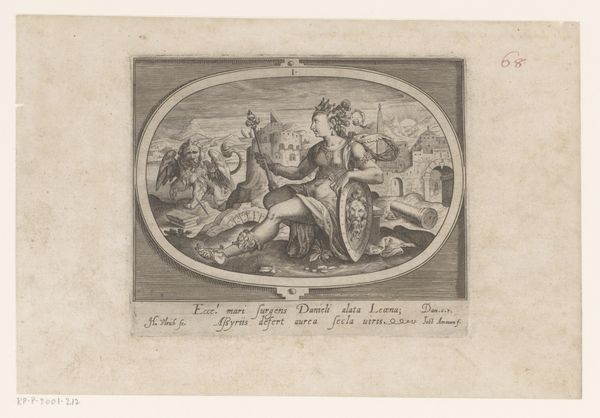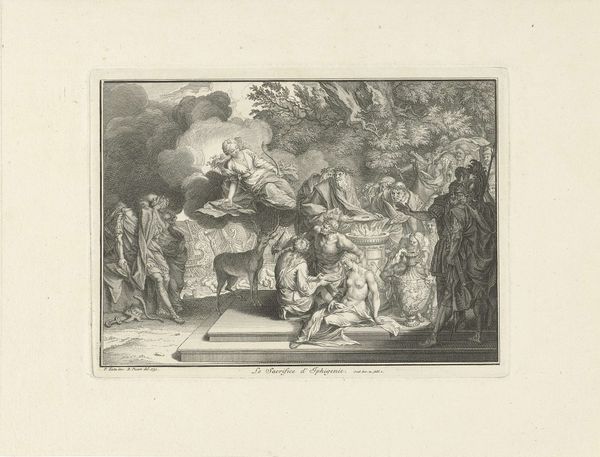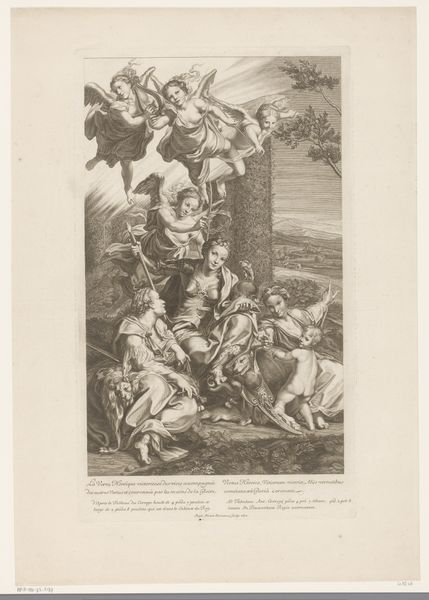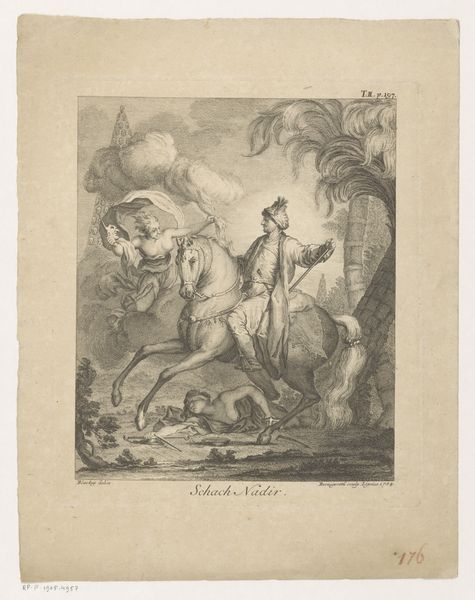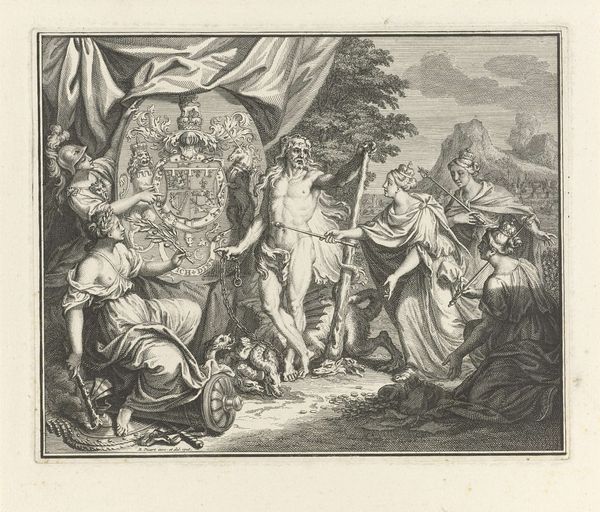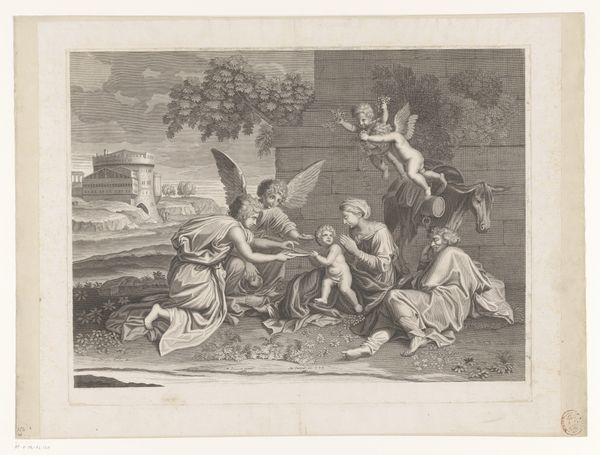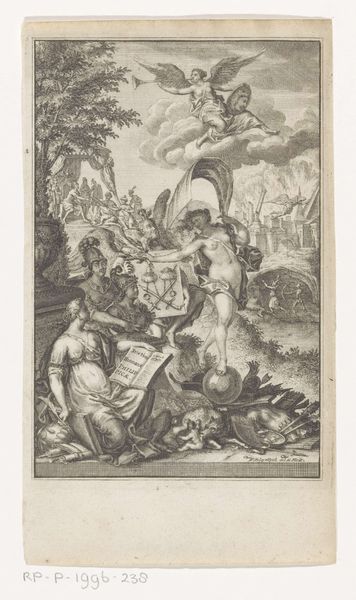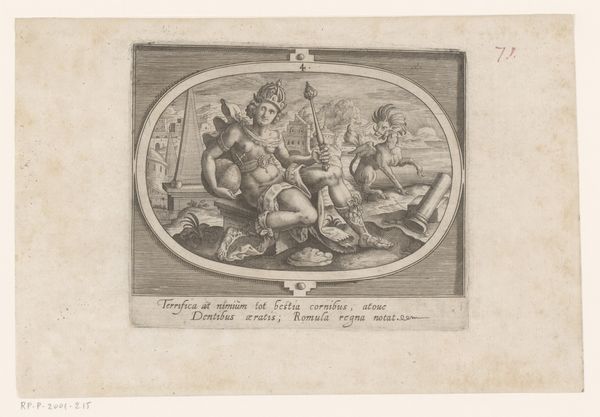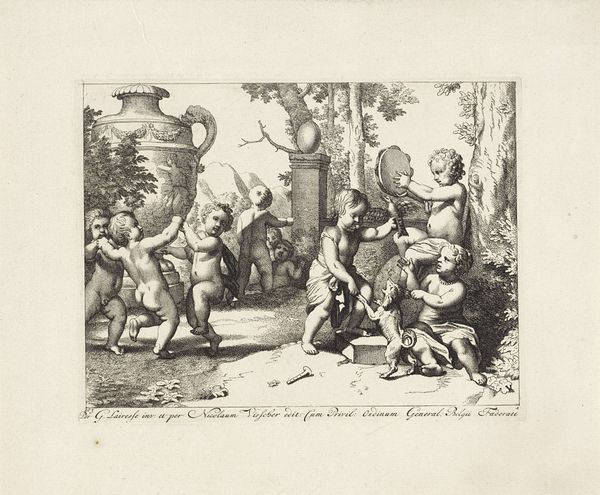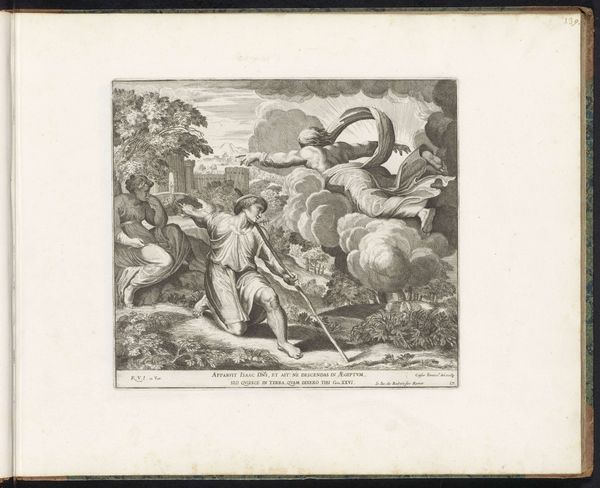
print, engraving
#
baroque
# print
#
old engraving style
#
landscape
#
figuration
#
genre-painting
#
engraving
Dimensions: height 184 mm, width 233 mm
Copyright: Rijks Museum: Open Domain
Curator: So, here we have "Vogelaar en vrouw," or "Fowler and Wife," a 17th-century engraving by Pieter de Jode I. The scene depicts a couple sitting on a small hill, but what catches your eye? Editor: Well, the body language strikes me as odd, and I am drawn to the tension between them. What can we uncover beyond this initial reading? Curator: I find it productive to think about genre painting, and the concept of ‘everyday life’ as a deliberate artistic construction, far from innocent or neutral. Consider how gender operates within these seemingly candid scenes. What narratives are being reinforced or subtly challenged here? Editor: You’re pointing me to the social implications, then? It does seem the woman is less a subject and more an accessory within the scene… Curator: Precisely. This image also speaks volumes about early forms of capitalistic society. How does this seemingly idyllic landscape normalize or mask labour relationships, and even early forms of environmental exploitation? Editor: I hadn't thought about the environmental aspect, it does prompt questions about the context of the 'vogelaar', this hunter, within the ecosystem he's acting upon. Curator: Indeed. The act of hunting and trapping becomes a reflection of power dynamics, not only over nature, but within society. How do we read these 'everyday' images as coded messages that uphold certain social and gendered expectations? Editor: Thinking about this piece, especially from a feminist and post-colonial point of view, shows me that images like these have a far broader relevance. Thank you, it helped a lot. Curator: Remember, art history isn't just about dates and styles. It's a crucial lens through which we can analyze the development and propagation of social structures.
Comments
No comments
Be the first to comment and join the conversation on the ultimate creative platform.
